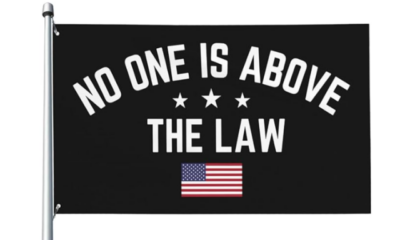Smells Like Infringement
They Don’t Just Want Your Guns. They Want Your Mind, Too.

Would you like a free coat of virtue signaling with your brainwash today, sir?
If the only way to win a debate is to muzzle your opponent, you lose.
New York isn’t the only state pitching a world-class toddler tantrum over the Supreme Court’s recent Bruen decision. Not to be outdone, California ate a bran muffin, drank a gallon of gas-station coffee, and squatted out some legislation that manages to directly infringe the First Amendment as well as the Second. That’s because the antis have learned that any time people are exposed to actual facts about guns, those people reconsider. When a state passes a law designed to keep you from so much as seeing a photo of a gun, you can be certain that this isn’t about gun control at all. It’s about mind control. Our friends over at NRA-ILA (which is NRA’s lobbying arm) have all the details you need to make up your own mind.
~~~~~~~~~~~~~~~~~~~~~~~~~~~~~~~~~~~~~~~~~~~~~~~~~~~~~
Anti-gun politicians hate civilian gun ownership so much, they’re willing to do away with the First Amendment just to get at the Second. Such is the case with New York’s new speech-based restrictions on the Right-to-Carry. Just as troubling is California’s AB2571, which purports to ban all firearms-related advertising that a minor (those under the age of 18) might find attractive.
Signed into law by Gov. Gavin Newsom (D) on June 30, AB2571 provides,
A firearm industry member shall not advertise, market, or arrange for placement of an advertising or marketing communication concerning any firearm-related product in a manner that… reasonably appears to be attractive to minors.
Note that the advertisement need not be aimed at minors. The item only needs to “appear to be attractive to minors” in order to trigger the ban.
The legislative text goes on to list some examples of what would constitute prohibited marketing. However, the statute makes clear that the prohibited advertising is “not limited to” these examples. This means that there is no way to determine what a given California court might find as “appear[ing] to be attractive to minors,” and thus banned.
Of course, a great deal of advertising is attractive to both adults and minors. A young shooter or hunter might value the same characteristics in a firearm-related product (accuracy, reliability, ease of use) that would attract an adult buyer. Therefore, the legislation invites endless litigation over the contours of the prohibition.
According to the statute, an advertisement is explicitly prohibited when it:
Offers firearm-related products in sizes, colors, or designs that are specifically designed to be used by, or appeal to, minors.
…
Uses images or depictions of minors in advertising and marketing materials to depict the use of firearm-related products.
Note that this prohibition would not only eliminate advertisements supposedly targeted at minors, but also encompasses advertisements informing parents about lawful products they might purchase to use with their children. This would include a ban on advertisements for youth versions and sizes of common sporting rifles, shotguns, and stocks and could be read to include advertisements involving size-adjustable stocks and other accessories.
Moreover, the law bans any depiction of a minor in firearm-related marketing materials – no matter the context. As a love for the shooting and outdoor sports is often passed down generation to generation, wholesome family-centric shooting and hunting imagery has long been a staple of firearms advertising. Such artistic representations of the shooting sports are prohibited under this legislation.
A “firearm industry member” that disobeys California’s speech restrictions is subject to a penalty of up to $25,000 per violation. The legislation makes clear that “Each copy or republication of marketing or advertising prohibited by this section shall be deemed a separate violation.” The bill also invites attorneys to inundate the firearm industry with lawsuits by creating a private right of action against offenders and offering those who prevail attorney’s fees.
Given California’s political posture in the wake of the U.S. Supreme Court’s landmark NYSRPA v. Bruen decision and the expansive scope of AB2571’s ill-defined speech restrictions, it’s likely the law’s drafters’ intent has no relation to their purported goal of protecting children. Rather, the legislation is written in a manner so broad as to attempt to eliminate firearm-related advertising in the Golden State and, in turn, pro-Second Amendment publications that rely on firearm advertising for revenue. The bill supporters’ over-arching goal is to stifle their opponents’ political speech.
However, even if AB2571’s drafters’ motives are taken at face value, the legislation violates the First Amendment because it is overbroad, is a content-based restriction on speech, and, even if analyzed as covering purely commercial speech, fails to comport with the Supreme Court’s existing commercial speech framework. In addition to violating the First Amendment, the law likely violates the equal protection clause. While the law would prevent members of the firearm industry from engaging in certain speech, it would not prohibit others from engaging in the same conduct.
Under the Supreme Court’s test laid out in the Bruen case, the law also violates the Second Amendment. Justice Thomas’ majority opinion makes clear that the burden is on the state to defend any restriction on the right to arms by showing that the regulation is of a type or analogous to a restriction that has historically existed on the right since the founding. Such broad bans on advertising of Second Amendment-protected services and products clearly have no historical analogue.
There are already multiple challenges to AB2571 under way. Please check back to www.nraila.org for more updates on this law and any litigation challenging it.
-

 Smells Like Infringement1 month ago
Smells Like Infringement1 month agoCensored! Check Out the Gun Meme That Got Me Perma-Banned from Twitter/X
-

 Guns Save Lives2 months ago
Guns Save Lives2 months agoWe Already Knew, BUT: NRA Exposes Shocking 911 Call
-

 Gun Rights1 month ago
Gun Rights1 month agoLet’s See If Lefties Think the Brady Campaign is “Above the Law”
-

 2A's Lighter Side2 months ago
2A's Lighter Side2 months agoOpen Your Mouth & Close Your Eyes! Here’s Another Anti-Gun USAID Surprise …
-

 Gun Rights2 weeks ago
Gun Rights2 weeks agoDOJ Tells Anti-Gun Illinois to Stop Eating Paint
-

 Smells Like Infringement1 week ago
Smells Like Infringement1 week agoMarriage Made in Hell: Let’s NOT Merge ATF & DEA
-

 Gun Rights3 weeks ago
Gun Rights3 weeks agoRELOADED! NRA 2.0 Comes Out Swinging in 2025
-

 Laws & Rights1 month ago
Laws & Rights1 month agoThe Ides of March for Our Lives
